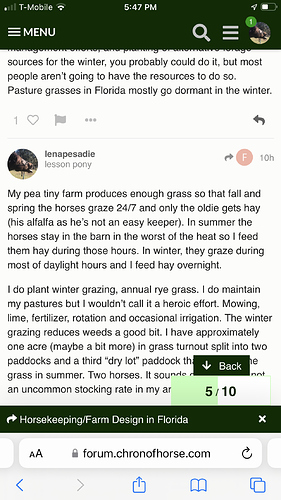I lived in south Florida, South Carolina, Washington state, and Virginia. I just purchased a small lot down in Ocala for a winter property and I specifically requested to my agent that the property be ‘sugar sand’.
Yeah, it’s harder to get grass. But you never, ever have mud. Even after a huge monsoon it dries super fast. With sugar sand you can put more horses on a smaller property because you don’t need to worry about mud.
If you plan on riding year round make sure the arena is raised slightly above the surrounding area. Depending on where you are in Ocala, you may have hills; put it on top of the hill. The monsoon type rains can very quickly drop several inches of rain and make an arena a pond for days on end.
This isn’t about property planning, but about the area. Just make sure you really scout out where the property is. Some parts of Ocala and the surrounding area are lovely. Some parts not so much. And because it’s growing quickly, properties that are decidedly NOT horse friendly are being marketed as such.
An example; a piece of property I went to look at fit all my requirements and was under budget. Agent billed it as a perfect fit. I walked the property and thought ‘huh, this mound here is really weird. It almost looks like a railroad’.
Well, I went to google earth, went ‘back in time’, and sure enough it was a railroad. I’m not even sure if they had removed the track or just buried it. I contacted the county on it and it turned out that the rail company (CSX I think) still owned the right of way! They could just decide to start running freight trains right through the middle of my yard if they wanted, and there was nothing I could do about it.







